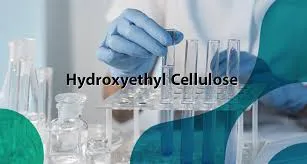
Dec . 06, 2024 23:28 Back to list
hpmc vs hec
Comparative Analysis HPMC vs. HEC in Pharmaceutical Applications
Hydroxypropyl methylcellulose (HPMC) and hydroxyethyl cellulose (HEC) are both popular cellulose ethers widely used in various pharmaceutical applications, from drug formulations to controlled-release systems. Both materials exhibit unique properties that make them suitable for different applications, leading to a critical evaluation of their characteristics, functionalities, and uses in the pharmaceutical industry.
Chemical Structure and Properties
HPMC is a non-ionic, water-soluble polymer derived from cellulose. Its structure incorporates hydroxypropyl groups along with methyl groups, which provide it with unique solubility and gel-forming properties. The level of substitution and the ratio of hydroxypropyl to methyl groups can be controlled during synthesis, leading to different grades of HPMC, each with specific viscosity and solubilization characteristics.
On the other hand, HEC is also a non-ionic, water-soluble cellulose ether, but it contains hydroxyethyl substituents. HEC is typically used for its thickening and stabilizing properties in formulations. The degree of substitution influences the viscosity and solubility of HEC as well, allowing for customization according to specific requirements in a formulation.
Rheological Properties
The rheological behavior of a polymer is crucial for its performance in pharmaceutical applications. HPMC exhibits a shear-thinning behavior, meaning that its viscosity decreases under stress or shear. This property is particularly advantageous when used in applications requiring easy dispersion or pumping. Moreover, HPMC can form gels upon cooling, providing a versatile option for various formulation types, including suspensions and emulsions.
Conversely, HEC demonstrates pseudoplastic behavior, similar to HPMC, but with a slightly different viscosity profile. The thickening effect of HEC is prominent at low shear rates, making it an ideal choice for applications where high viscosity is needed at rest, such as in gels and creams. However, HEC may not gel upon cooling like HPMC, limiting its utility in certain formulations.
hpmc vs hec

Applications in Pharmaceutics
In the realm of pharmaceuticals, HPMC is commonly used as a binder in tablet formulations, coating agent, and controlled-release agent. Its ability to form a gel in the presence of water makes it particularly useful in modulating drug release rates, enhancing bioavailability, and providing sustained action for oral dosage forms. Additionally, HPMC is employed in ophthalmic formulations due to its safety profile and excellent film-forming properties, which facilitate ocular drug delivery.
HEC, while also applicable in oral formulations, is more often utilized in topical applications due to its superior thickening and emulsifying properties. It is frequently found in creams, lotions, and gels, where its ability to enhance texture and stability is critical. Moreover, HEC’s excellent water retention properties make it a popular choice in products aimed at maintaining skin hydration.
Stability and Compatibility
Both HPMC and HEC demonstrate good stability and compatibility with a wide range of active pharmaceutical ingredients (APIs). However, HPMC is particularly noted for its compatibility with different solvents and excipients, allowing for versatile formulation designs. On the other hand, HEC can sometimes interact with specific electrolytes and other components, which may affect its performance in intricate formulations.
Conclusion
The choice between HPMC and HEC in pharmaceutical applications ultimately depends on the specific requirements of the formulation. HPMC offers versatility in gel formation and controlled release, making it suitable for a wide range of pharmaceutical dosage forms. HEC, with its excellent thickening and stabilizing properties, is favored in topical formulations.
Both polymers play critical roles in the design and development of effective pharmaceuticals, and understanding their unique properties allows formulators to select the most appropriate agent for their specific needs. As the pharmaceutical industry continues to evolve, both HPMC and HEC remain crucial components in the pursuit of innovative therapeutic solutions.
-
Versatile Hpmc Uses in Different Industries
NewsJun.19,2025
-
Redispersible Powder's Role in Enhancing Durability of Construction Products
NewsJun.19,2025
-
Hydroxyethyl Cellulose Applications Driving Green Industrial Processes
NewsJun.19,2025
-
Exploring Different Redispersible Polymer Powder
NewsJun.19,2025
-
Choosing the Right Mortar Bonding Agent
NewsJun.19,2025
-
Applications and Significance of China Hpmc in Modern Industries
NewsJun.19,2025







